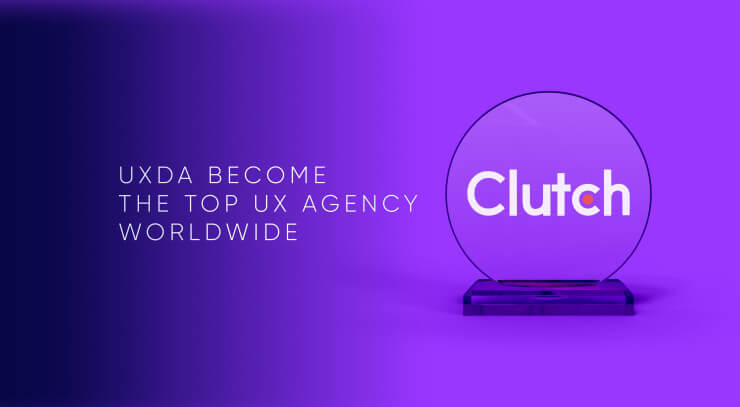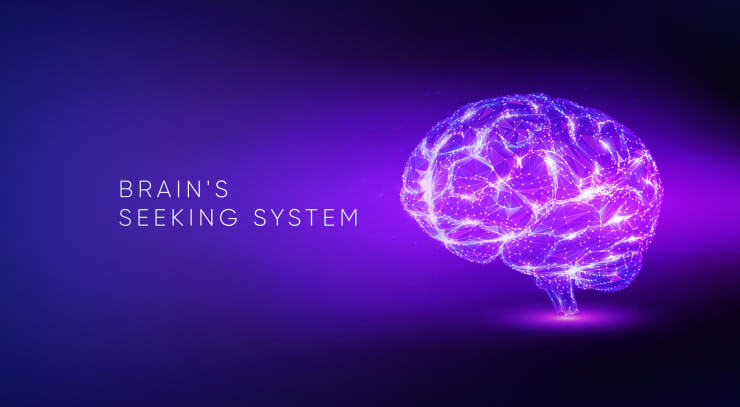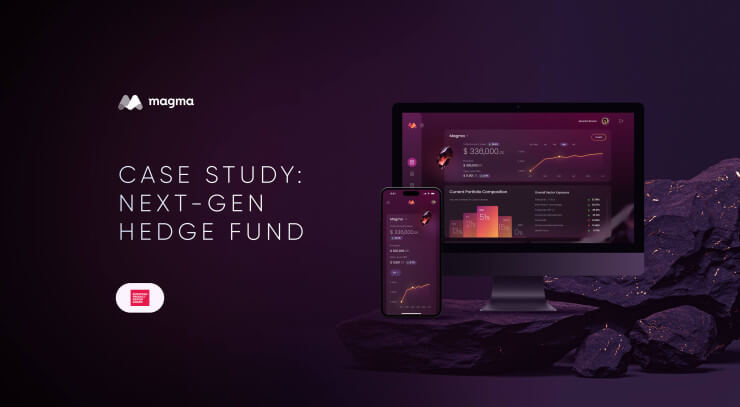Throughout history, banks has remained a closed industry, monopolizing the majority of other financial services. Total digitalization has brought changes to the industry. FinTech gives users the right to choose an alternative. However, the customer experience provided by open banking solutions driven by the PSD2 directive adopted in the European Union will disrupt Fintech and the banking industry. It will open market barriers, completely changing the game's rules through massive competition.
The Revised Payment Service Directive (PSD2) was a forced switch for all European banks to the Open Banking model. 2018 was a turning point for banking as the EU countries were obliged to incorporate PSD2 into national law and publish their Application Programming Interfaces (APIs). According to report by Open Banking Limited combined CMA9 data shows 7 million consumers and SMEs used Open Banking services during January 2023 in UK. And a new study from Juniper Research predicts that global Open Banking payments transaction values will exceed $330 billion by 2027, up from $57 billion in 2023.
In September 2023, Apple launched the iPhone Wallet app integration with UK users' current account balances and transaction history. The Apple Wallet app's integration with the Open Banking API allows users to get their checking account balance directly from their bank.
What is Open Banking
Open Banking refers to the use of open APIs (Application Programming Interfaces) that allow third-party financial service providers to access financial institutions' customer data with the customer's permission. This enables customers to securely share their financial data with other companies and use a wider range of financial products and services than they would be able to access through a single financial institution. This means that customers can share their financial information with other service providers, such as budgeting apps, investment services, or lenders. The potential benefits of open banking are significant, and improving customer experience is one of the most promising ones.
Open Banking UX (user experience) is important because it can help to increase competition in the financial industry, which can lead to better, innovative and more friendly financial products and services for consumers. Additionally, Open Banking UX can make it easier for consumers to manage their money and compare different financial products and services, which can help them to make more informed financial decisions. Also, Open Banking can help to increase the security of financial transactions by allowing customers to grant and revoke access to their data on a per-application basis. This can help to prevent unauthorized access to sensitive financial information.
Open Banking main goal is to ensure maximum transparency and security, encouraging competition in the financial industry. As a result, the quality of financial services will improve, and fees will decrease. Consumers’ financial data will be released from the bank's monopoly and will finally become the property of the customers who will have open access to it at will.
At some point in the future, a global, unified financial platform based on APIs will be formed, ensuring fair access to data that will disrupt local banks' monopolies. This has already led to a surge in fintech startup activity. They now have access to banking databases and financial infrastructures that were previously closed. They аrе able to provide innovative solutions to existing bank customers, and modern financial products more relevant to the needs of the digital world.
Open Banking is speeding up the transition━from domestic financial services offered by bank branches, to global digital financial services available anywhere in the world. This will give power to small FinTech teams (only dozens of people) to successfully outcompete banks who employ thousands of employees. Having equal access to customers’ data and the possibility to process it, the main competition will be on a customer experience level. The digital interface design is becoming the key part of the open banking user experience.
Further open banking development may impact data storing, from bank servers to decentralized storage distributed across many devices. Blockchain technology can help with that. In this way, financial data security may be significantly improved in the future.
Open Banking Highways Bring Financial Freedom to Customers
Imagine open banking as a highway network that connects different financial institutions and service providers. Before open banking, each bank was like a separate town with its own roads and infrastructure. To manage their finances, customers had to navigate a complex system of different platforms, interfaces, and security protocols. With open banking, the roads between banks are open, and customers can travel freely between them, using different vehicles and services along the way easily.
This metaphor highlights some of the ways open banking is improving customer experience across the financial industry. A more connected and accessible financial ecosystem will allow customers to travel smoothly and safely to their financial goals while enjoying a wide range of services and options along the way:
1. Faster and more convenient journeys
With open banking, customers can access a range of financial services from different providers without having to switch between multiple platforms or manually enter their data. It's like taking a direct highway instead of a winding country road.
2. More choices and flexibility
Customers can choose the financial services that best fit their needs and preferences, instead of being limited by what their bank offers. It's like having a map that shows you all the possible routes between destinations, not just the ones that the car manufacturer wants you to take.
3. Better safety and security
Open banking uses secure APIs and authentication protocols to ensure that customers' data is protected and only shared with authorized service providers. It's like driving on a well-maintained highway with clear signs and traffic rules, instead of taking your chances on a back road.
4. Personalized route
Open banking is like a highway system that enables service providers to access customers' financial data through secure APIs. This means that service providers can use that data to offer customers more personalized services and recommendations, much like Google Maps, or Waze which provides real-time traffic updates and alternative routes based on the driver's destination and preferences.
5. Easy lane switching
With open banking, customers can switch between banks and financial service providers more easily, as their data can be transferred seamlessly between them. This is like changing speed lanes on a highway, as customers can move from one provider to another on the go without having to exit and re-enter the highway.
6. Road transparency and control
Open banking gives customers more control over their financial data, allowing them to choose which providers to share it with and for how long. This transparency can also help customers better understand their own financial situation and make more informed decisions. It's like having a clear view of the road ahead, with no blind spots or surprises.
7. Highway infrastructure growth
Open banking can stimulate innovation and competition in the financial industry, as new players enter the market and offer new services and products. This can lead to better pricing, more innovative features, and more choices for customers. It's like having a highway with many rest stops, gas stations, and restaurants, each offering something unique and attractive to drivers.
Open Banking will cause the rapid growth of digital financial services, taking the user experience to the next level. Many procedures in the digital banking solutions will become simple and automated. With access to the banking APIs, FinTechs can provide users with opportunities to improve their financial lives. For banks and FinTech companies, this means only one thing. It is necessary to revise the existing user flow and redesign the actual service to eliminate friction, making it valuable for customers.
Currently, banks have an infrastructure and a customer base, but they are burdened by a product-centered thinking legacy. Most banking solutions are outdated, and interfaces are not intuitive. Unlike the banks, FinTech companies create modern, client-centered solutions, but they do not have enough resources to bring them to market and acquire customers. The API will provide third-party developers with access to banking systems and customer databases, thus allowing end users to manage bank accounts via third-party service interfaces that do not belong to their primary bank.
It is clear that the transition of the financial industry to the Open Banking model will have deep impact on future of digital banking that requires a complete rethink of the financial user experience. In reality, banking infrastructure and the ownership of customers’ data will no longer be a decisive factor. Key differentiation from the user perspective will associate with the convenience and clarity of the interface, providing a clear advantage to the user experience.
It means that, in the future of Open Banking, design will become a main tool for creating successful financial services. The transparent future of banking technology provides an ability to access accounts, financial data, and payments using any third-party financial service that give users previously unimagined financial freedom.
Open Banking Forces Innovations in the Financial User Experience
As an expert in the field of financial UX design, I have been thinking how exactly open banking will impact financial user experience. What specific improvements will appear, and how can user experience design help to create highly demanded services using Open Banking opportunities?
Additionally, Open Banking can enable the development of new and innovative financial applications and services that improve the user experience with innovative and more personalized financial services for customers. On the other hand, Open Banking also creates challenges for financial UX designers, who must ensure that the new financial applications and services are easy to use and understand. This may require the development of new design standards and user-centered design approaches to ensure that Open Banking is accessible and beneficial to all customers:
1. Access to Different Accounts Through a Single Service
In the framework of the new Open Banking UX architecture, the emergence of the Account Information Service Provider (AISP) is inevitable. AISP providers will act as aggregators of customer account data from various banks. This will give users the ability to access different bank accounts through the most convenient service.
Those who have accounts in several banks need to visit each online bank separately to check their balance and move money. Some FinTech services already offer the opportunity of working with different banks through a common interface using a “screen-scraping” connection, but this is unsafe and violates the client’s rights.
Open Banking allows the client to decide in which banks to keep their money and what service to use for managing their finances. This will significantly increase competition in the financial sector while, at the same time, improve the quality of services. Third-party operators will undoubtedly use this opportunity for cross-selling, but it will give users more choices and will help them to make informed decisions.
2. Easy, Cheap and Instant Money Movement
Other agents whose implementation is provided by the PSD2 directive are Payment Initiation Service Providers (PISP). They are players who can initiate payment transactions using the API connection at many banks.
This is a radical change in the payment-processing industry, opening the possibility of integrating instant and cheap payments into any digital interface. For users, this means transferring money will be as easy as sending a message.
Paying bills and paying for goods, as well as money transfers, have become much easier, faster, and more convenient due to Open Banking UX. At the same time, they will be much safer as the number of intermediaries in the transaction chain will be reduced.
3. Increasing Financial Safety
One of the key priorities of the PSD2 directive is to enhance user security in digital banking solutions. Providing FinTech developers with access to bank APIs will reduce the use of the screen-scraping practice. Users will no longer need to violate the contract with banks and compromise their finances as they will have the choice of using the convenient and innovative Fintech services.
To access banking APIs, third-party banking services will have to obtain licenses from the financial regulator. As in the case of banks, their liability will be secured by guarantee deposits, and “know your customer” (KYC) will be enacted, thus ensuring the security of the digital financial environment.
In addition, users will be able to determine the volume and content of financial information that they are ready to share with third parties. This will require informing users about the rules of Open Banking service operations.
4. Simplified and Friendly Onboarding
The ability to instantly retrieve user data using an AISP provider will open up previously unavailable capabilities to financial services. When a user has to perform an enrollment procedure, he/she will no longer need to provide identification. It will be sufficient to share secure access to their primary financial account data, resulting in no further need for onboarding and no more long forms.
This will allow users to freely migrate from one service to another. Users will be able to onboard an unlimited number of services, import their financial data, and immediately try them in action. As a result, it will become easier to choose the one that provides the most convenient and enjoyable user experience.
From the FinTech point of view, this will make it easier to enter the banking market. In the world of Open Banking UX, the data about customers’ financial history and transactions will not be considered a barrier to switch between financial services. This information will be available regardless of the service provider if user accepts it.
5. Forecasting and Personalization
Future Open Banking will allow third-party companies to use and process a huge array of accumulated data using Big Data and machine-learning technologies. This will take it to a new level, thereby increasing the value of the service offered to users.
Access to Big Data will enhance the predictive capabilities of financial services. Using Big Data power and machine-learning in banking, as well as the unrestricted access to all financial data it is possible to predict and warn users about financial actions and consequences. Such a service can help users to optimize quality of their financial lives.
The detailed financial picture of the user, compared with the behavior patterns of millions of other customers, allows users to maximally personalize the user experience. This will provide users with the most suitable financial product from thousands available in the market exactly when they really need it.
6. Increasing the Availability of Financial Services
Simplified user identification implemented in the Open Banking UX will allow customers to apply for financial products (e.g., loans, investments, etc.) in just one click. With the rise of aggregators, it will no longer be a traditional application but a request for a personalized offer from different suppliers. Users will be able to search the best, or trust the recommendations of the aggregator service.
Access to full customer financial data will stimulate offers of analytical services that provide financial recovery programs. This may be relevant for improving credit scores or simply changing users’ financial habits.
In any case, such services will help users understand what prevents them from accessing the most attractive and profitable financial products. Users will learn exactly what they are doing wrong and get automated recommendations based on an analysis of millions of similar cases.
7. Providing the Best Possible Financial Solution
Aggregators for finding the best financial offers, taking into account the user's profile, should become an organic part of the Open Banking user experience. As a result of an increase in the speed of the market’s transition to the Open Banking model, we can expect explosive growth of such services.
This is quite natural. On the one hand, the number of financial services will grow. On the other, solutions that will help to choose the right service as needed. Such solutions may become a core part of the banking platform and help some banks to find their business model in the new economics of Open Banking.
Open Banking UX Will Unite Banks and FinTech in Creating a New World
I believe that in a decade the Open Banking future revolution will lead to a defragmentation of the financial industry. As a result of the emergence of a unified digital platform, financial services will become more transparent, faster, cheaper, and more convenient. Consumers will be able to better manage their finances, make better financial decisions, and gain access to innovative financial solutions.
This revolution will create a form of cooperation between banks and FinTech services. In the long term, banks will need to find a new place in the disrupting industry. Gradually, they could turn into platform providers of banking service infrastructure. Excellent case studies for inspiration can be found on such platforms as Amazon, AliExpress, iTunes and Google Play. Only an appropriate digital strategy will allow banks to stay alive after the disruption of the traditional financial industry.
As a result, innovative banks may lose in service fees, but they will gain in volume. Many FinTech startups will not only offer services on their platform, they will actively introduce innovative products designing new user experiences, thereby enriching the financial user’s journey and transforming the banking industry. This will attract new users and provide them with new ways of using financial instruments.
Today, there are already dozens of banks that are reserving their place in the new digital reality by entering the Open Banking model and publishing their APIs. They are also actively experimenting with FinTech partnerships to try new forms of banking.
One of the leaders in this area is BBVA. It is providing extensive access to its online banking platform on the internet, clearly demonstrating the transition from product-centered thinking to Banking as a Platform (BaaP).
At the moment, the following banks already provide access to their APIs, and the list is growing: ABN AMRO, Banca Sella, Bank of Cyprus, Barclays, Banco Bilbao Vizcaya Argentaria (BBVA), Česká spořitelna, Citi, Danske Bank, DBS Bank, Deutsche Bank, Fidor Bank, Hellenic Bank, HSBC, Lloyds Bank, MKB Bank, NGB i-bank, Nordea, Royal Bank of Scotland, Saxo Bank, SEB, Spar Nord and Starling Bank.
At any rate, we have to stay realistic and understand that 2018 was only a starting point. Such a large-scale transformation of the industry requires a lot of technical work and will take a long term. There are still a lot of unanswered questions. The state introduction of PSD2 in Europe is a good start, which launches the Open Banking initiative around the world. After all, it is a revolutionary experiment of a targeted transition to a global, digital financial system.
While open banking promises to provide numerous benefits, such as increased competition, innovation, and financial inclusion, it also presents several challenges. Here are some of the main challenges of open banking:
1. Security and privacy
Because open banking experience involves sharing customer data with third-party financial service providers, there is a risk that sensitive financial data could be accessed by unauthorized parties, vulnerable to cyber attacks, data breaches, or unauthorized access.. To address this challenge, it is important for financial institutions to implement strong security measures that are robust enough to protect against these risks and for customers to be careful about which third-party providers they grant access to their data.
2. Standardization
For open banking to be successful, there needs to be a common set of standards and protocols that all financial institutions and third-party providers can use to access and share data. This can be difficult to achieve, as different banks, countries and regions may have their own data standards, regulations and requirements.
3. Trust and adoption
For open banking to work, customers must be willing to share their data and trust that their information is being used appropriately. Some customers may hesitate to adopt open banking because of concerns about privacy and security.
4. Regulatory compliance
Open banking is subject to various regulatory requirements, which can be complex and time-consuming to comply with.
5. Interoperability
For open banking to be successful, different financial institutions and fintech companies must be able to communicate and share data seamlessly. This requires interoperability between different systems and platforms.
6. Business models
Open banking can disrupt traditional business models and revenue streams, which could be a challenge for some financial institutions. They may need to adjust their business models to remain competitive in an open banking environment.
7. Data governance
With open banking, financial data is shared between different entities, which can create challenges around data ownership, usage, and management. Financial institutions and third-party providers need to establish clear rules and guidelines around data governance, including how data is collected, stored, and shared, as well as who has access to it and for what purposes. This can be complex, as different entities may have different requirements or expectations around data governance, and there may be regulatory requirements that must be followed. Ensuring proper data governance will be critical for building trust among customers and stakeholders and ensuring the long-term success of open banking.
Overall, the challenges of open banking are significant, but they can be overcome with proper planning, collaboration, and investment in technology and infrastructure. As open banking continues to evolve, it will be interesting to see how these challenges are addressed and how the industry adapts to the changing landscape.
Open Banking will lead a huge number of financial services to enter the industry. At the technical level, they will collaborate with each other through the APIs. But, on the customer level, it will be a tough competition, tenfold higher than the one we are witnessing today.
In the world of Open Banking, the user experience design will become the main way to understand customers and to ensure that they will choose your service out of thousands of available offers. I hope that you started moving in this direction yesterday.
Get UXDA Research-Based White Paper "How to Win the Hearts of Digital Customers":
 If you want to create next-gen financial products to receive an exceptional competitive advantage in the digital age, contact us! With the power of financial UX design, we can help you turn your business into a beloved financial brand with a strong emotional connection with your clients, resulting in success, demand, and long-term customer loyalty.
If you want to create next-gen financial products to receive an exceptional competitive advantage in the digital age, contact us! With the power of financial UX design, we can help you turn your business into a beloved financial brand with a strong emotional connection with your clients, resulting in success, demand, and long-term customer loyalty.
- E-mail us at info@theuxda.com
- Chat with us in Whatsapp
- Send a direct message to UXDA's CEO Alex Kreger on Linkedin





















